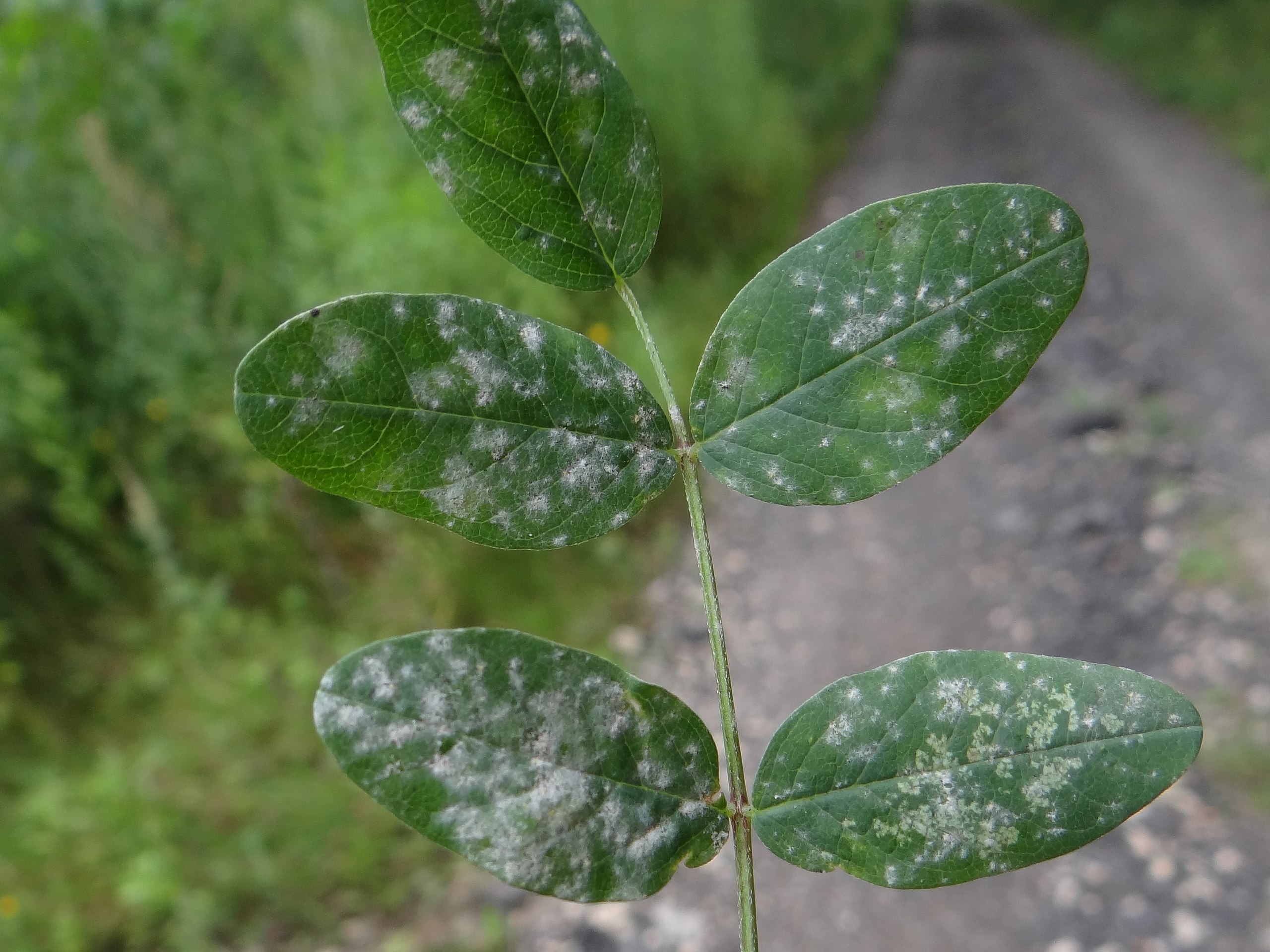
Powdery mildew
Erysiphe pisi
What is Powdery mildew (Erysiphe pisi)?
Powdery mildew caused by Erysiphe pisi can indeed be a major disease affecting several plant species, including peas, beans, lentils, and clover. It is distributed worldwide and thrives in regions with dry, hot days and cool nights. Powdery mildew is a widespread fungal disease that can significantly impact the health and productivity of affected plants. Powdery mildew infections are characterized by the development of a powdery white or grayish fungal growth on the surfaces of leaves, stems, flowers, and occasionally fruit.
How does Powdery mildew (Erysiphe pisi) occur?
Powdery mildew, caused by Erysiphe pisi, reproduces through asexual means. The fungus produces spores called conidia, which are carried by wind, insects, or other means to new plant surfaces. When these spores land on susceptible host plants, they germinate and form a network of fungal structures called mycelium. The mycelium absorbs nutrients from the host plant and produces new spores, completing the reproductive cycle. This asexual reproduction allows the disease to spread rapidly and infect new plants, contributing to its prevalence and impact on crop production.
Symptoms
1 - Effects of Powdery Mildew on Plants
• Powdery mildew weakens plants, hindering photosynthesis, nutrient uptake, and metabolism, leading to stunted growth and diminished health. • Infected plants experience reduced fruit sets, deformed fruits, and lower yields, affecting crop productivity and marketability.
2 - Effects on Soil
• Infected plant debris disrupts nutrient cycling, potentially causing imbalances in soil fertility. • Powdery mildew alters soil microbial composition and activity, impacting biodiversity, nutrient availability, and overall soil health.
Solutions
1 - Preventive Measures
• Choose cultivars that are resistant to powdery mildew to reduce the risk of infection. • Provide adequate spacing between plants to ensure good air circulation, reducing the favorable conditions for powdery mildew development. • Avoid overhead irrigation and water plants at the base to keep foliage dry and minimize moisture on leaves. • Prune plants to allow better airflow and reduce humidity levels around the foliage. • Rotate legume crops with non-host plants to break the disease cycle and reduce pathogen buildup in the soil.
2 - Organic alternatives and Biofungicides
• Consider using organic fungicides, such as sulfur or neem oil, as alternative treatments for powdery mildew. Follow the product instructions and safety guidelines. • Biofungicides are natural substances derived from living organisms like bacteria, fungi, or plant extracts. Examples include Bacillus subtilis, Trichoderma spp., and neem oil. • They offer an eco-friendly alternative for controlling powdery mildew and other fungal diseases.
3 - Chemical Control
• For powdery mildew treatment, sulfur-based fungicides like wettable sulfur inhibit fungal growth and spore germination. • Triazole fungicides such as tebuconazole or propiconazole offer broad-spectrum activity by disrupting fungal cell membrane formation. • Strobilurin fungicides containing compounds like azoxystrobin or trifloxystrobin disrupt fungal respiration. Note: It's essential to follow the specific instructions, dosage rates, and safety guidelines provided by the manufacturer and local agricultural authorities when using fungicides.
